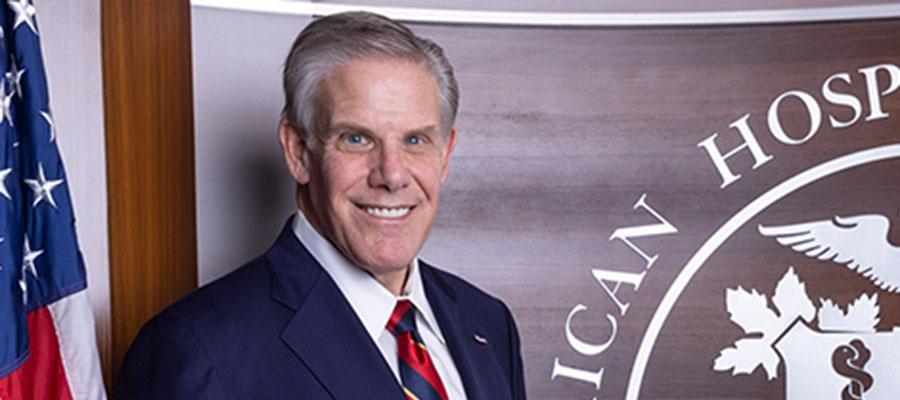We Must Keep Our Hospitals Strong as Severe Financial Challenges Threaten Access to Care

Most of us need the services of a hospital at some point in our lives. And hospitals and health systems have never wavered from their mission of keeping people healthy, as well as providing lifesaving care and essential public health services, even in the face of daunting challenges such as the COVID-19 pandemic.
To state the obvious, in order to achieve this mission, hospitals must remain financially viable. But for many hospitals and health systems that’s becoming increasingly difficult as they manage the aftermath and aftershocks of the most significant public health crisis in a century, all of which occurs against the backdrop of historic workforce shortages, broken supply chains, and rabid inflation that has increased the cost of caring.
This dire picture is documented in a new analysis prepared by Kaufman, Hall & Associates, LLC and released yesterday by the AHA. Here’s the upshot: 2022 is shaping up to be the most financially difficult year for the field since the beginning of the COVID-19 pandemic. Even the most optimistic projections for the entirety of 2022 indicate more than half of hospitals operating in the red. Under a pessimistic scenario for the rest of 2022, two-thirds of hospitals could operate in the red.
While these numbers are extremely alarming, it’s the real-world consequences for access to care that is most concerning. During a media briefing we hosted yesterday, three hospital and health system leaders — Michael Slubowski, president and CEO of Trinity Health based in Michigan; Jack Lynch, president and CEO of Main Line Health in Pennsylvania and a member of the AHA Board of Trustees; and Peggy Abbott, CEO of Ouachita County Medical Center in Arkansas — shared their powerful perspectives from the front lines about how access to care and services is threatened without additional support.
On the call, we also outlined a number of areas that Congress can help hospitals and their care teams. These include:
- extending programs that are critical for rural communities, such as the low-volume adjustment and the Medicare-dependent hospital programs which are set to expire Sept. 30, and implementing the rural emergency hospital program.
- making COVID-19 emergency waivers permanent, including flexibilities for telehealth and hospital-at-home programs, that have led to improvements in care;
- preventing imposition of the PAYGO 4% sequester and encouraging lawmakers and the Administration to once again suspend the 2% Medicare sequester;
- evaluating payment adjustments under the Medicare payment system;
- advancing ideas to stabilize safety net hospitals;
- seeking an equitable remedy for those hospitals affected by unlawful 340B payment cuts in previous years, based on the Supreme Court’s decision; and
- holding commercial health plans accountable for their behaviors that put further financial strain on hospitals and exacerbate workforce pressures.
On the last point, we commend the U.S. House of Representatives for their passage of the Improving Seniors’ Timely Access to Care Act earlier this week. This legislation takes important steps to reduce the burden and complexity of prior authorization requirements imposed by Medicare Advantage plans.
You can see our advocacy fact sheet and visit our webpage for more details about many of these proposals.
Yesterday’s media event builds on a number of reports AHA has released highlighting the challenges hospitals and health systems across the nation are facing. These include:
- A report released last week on the record number of rural hospital closures in 2020, as well as the financial and workforce challenges those hospitals face.
- A report issued last month on how deferred care during the pandemic has led to increased patient acuity in America’s hospitals, which means the people we see are much sicker than in the past and more expensive to treat.
- A report from the spring that examined the increase in a variety of input costs for hospitals and health systems driven by a jump in labor costs — which make up on average half of a hospital’s budget — up over 19% during the past two years.
During the next several weeks we have a number of activities planned to amplify the urgency of this situation, as well as provide resources to help you tell your story to your lawmakers and communities.
As part of those efforts, we’ll be releasing radio spots that we recorded with state, metropolitan and regional hospital association executives this week and spotlighting case studies from hospitals describing the challenges they are facing. We’re also capturing videos from hospital leaders and trustees and bolstering the message with inside-the-beltway advertising as we continue to reinforce with policymakers and the public the challenges and threats to access to care.
The bottom line is: America simply can’t be strong without its hospitals being strong. This issue deserves the immediate attention of policymakers at every level of government to ensure we are able to keep people healthy and maintain essential public services that our communities depend on so we can continue to always be there, ready to care.

